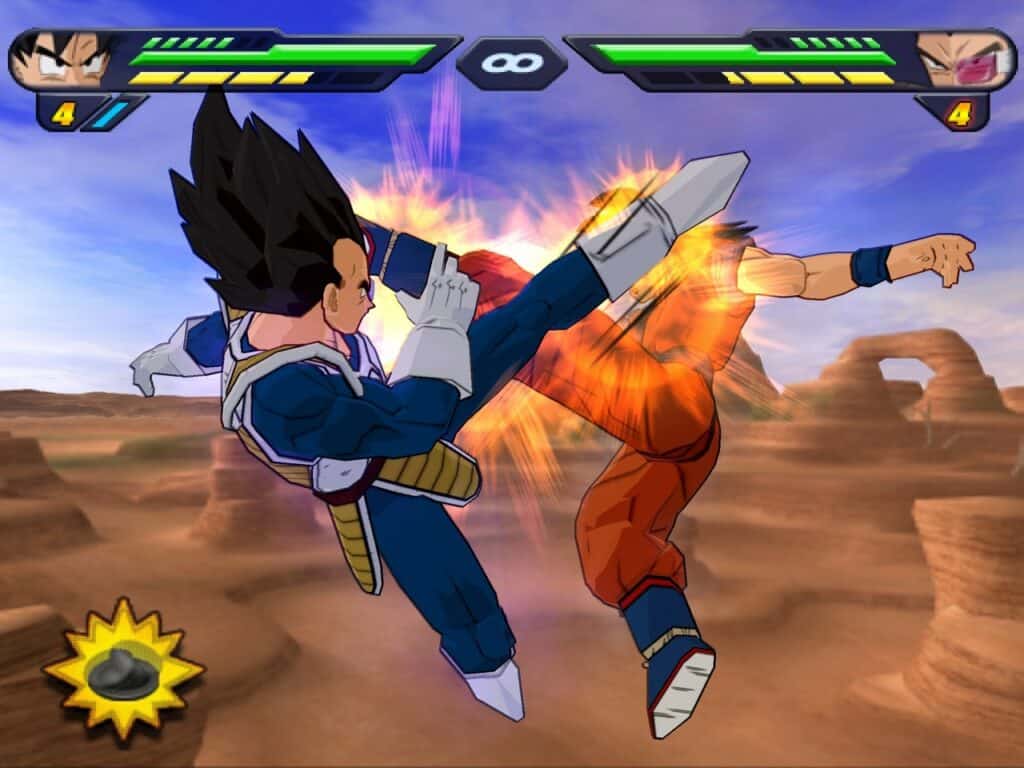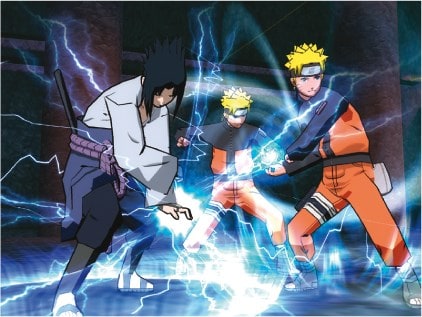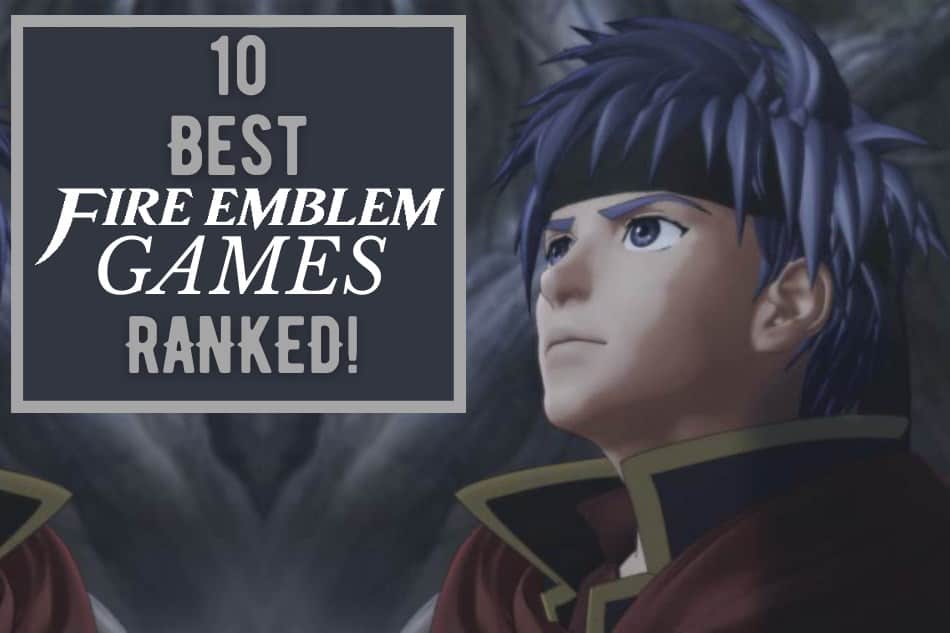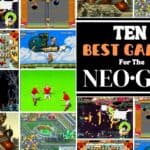The PlayStation 2 has one of the most extensive and enviable catalogs in the gaming industry, where action, adventure, racing, and, above all, fighting games thrived more than anything else.
Who doesn’t remember those afternoons with friends where the loser would hand over the controller to the next contender until the undefeated player’s streak was cut short?
While fighting games are still important today, they had their golden age in the 2000s with improved graphics, the gradual switch from 2D to 3D fighting, and a list of new features the PS2 had to offer. Let’s review the
Best Fighting Games On The PS2
Dragon Ball Z: Budokai Tenkaichi 2 (2006)
We start strong with a video game of the most popular anime of all time. Although the first title is not bad at all, Budokai Tenkaichi 2 was the one that started the legend of this anime that will soon receive a new installment.

Developed by Spike and distributed by Bandai Namco, this game includes a fairly extensive story mode that covers the Dragon Ball Z and Dragon Ball GT sagas, as well as two OVAs and 3 stories of its own. As for the characters, it has almost 130 eligible fighters to have fun in combat and explore its incredible open worlds.
Thanks to its wide repertoire and its Street Fighter style Versus and Tournament modes, the replay value of this game is very long if not infinite, although it is much more fun when you enjoy it with friends.
With fluid gameplay and fights as colorful as the show, Budokai Tenkaichi 2 laid the foundations of one of the most beloved franchises of fighting game fans.
Soulcalibur III (2005)
Although its title says otherwise, this game is the fourth installment of the Soul Edge saga that added new game modes such as Tales of Souls, a campaign mode that is based on and pays homage to the classic Soul Blade.

On the other hand, we have the mechanics of character creation that allows you to create fighters to your liking and evolve them within the different fighting styles and weapons for use in Chronicles of the Sword.
This mode also has its own progress system, RPG elements, experience levels, and turn-based combat.
Although if you are a more classic gamer of the genre, of course, you have the pure fighting modes with more than 20 characters to choose from.
Undoubtedly, a game so complete that it should not be considered just a typical fighting game, with an infinite number of possibilities and an extensive duration.
As a curious fact, Soulcalibur III took the reverse path to the usual, as it was first released on the console and then came to arcade machines. Even though we are 20 years after its release, it is still a must-have game for fans of the saga.
Tekken Tag Tournament (2000)
Wow, this list is full of sequels and Tekken couldn’t be left out of the party.
Although the previous titles on this list of the best fighting title are superior games graphically and in certain mechanics, Tekken Tag Tournament earns a top spot for daring to present changes in its franchise.
In addition to not being canon within the Tekken lore, this title introduced the Tag system, allowing you to create teams of two fighters for tournaments. And as for the fighters themselves, we have a huge cast consisting of the 40 most important characters from the previous 3 Tekken games.
For a production from the early years of the console, it has aged quite well and its gameplay is very enjoyable. Tag Tournament received some criticism at the time for so many novelties to the saga, but time took care of that giving it the place it deserved.
Dragon Ball Z: Budokai 3 (2004)
It may sound confusing, but Budokai and Budokai Tenkaichi are two different sagas. Beyond the fact that they are set in the same universes with the same characters, both are excellent.

Before Tenkaichi 2 took the world by storm, Dimps took on the third part of the Budokai sub-series, introducing a much-improved ki system, transformations, and combo system. Something that many fans were asking for at the time.
Most of the novelties were in the game mechanics, since at a visual level it already enjoyed a remarkable excellence. If something fails a little is in its story mode that falls somewhat short of the greatness of the manga/anime as well as in its repertoire of fighters, but its gameplay is so fun that makes you forget those flaws.
At the time, the Tenkaichi and Budokai sagas were a rivalry in the style of PES versus Fifa. One was praised for its gameplay and the other for its great number of features. Now it is well respected in the competitive fighting community.
Naruto Shippuden: Ultimate Ninja 5 (2009)
One thing all Dragon Ball fans agree on is that the manga/anime Naruto is its great archenemy, and both franchises fought throughout the PS2 generation using great video games as fists.

In this struggle to become the king of anime fighting games to play, CyberConnect 2 released Naruto Shippuden Ultimate Ninja 5 initially for Japan in 2007 until two years later when it reached the rest of the world.
By that time, the PS3 had been on the market for a few years, so this title brought Naruto’s passage through Sony’s best-selling console to a close.
With a visual style that directly evokes the anime and an RPG mode that tells a complete arc of the manga/anime, Ultimate Ninja 5 is a delight especially for its fans, although casual gamers can also enjoy it.
The game also has a total of 62 fighters that face each other in extremely frenetic combats in which a single mistake can cost you victory.
In addition, you must choose your fighter well, as some of them suffer irreversible transformations in the arena, completely changing the dynamics of the combat.
Virtua Fighter 4: Evolution (2003)
Since we are talking about great sagas, it is impossible not to mention Virtua Fighter and the Evolution version of its fourth part, which is a far superior revision of its original version.
Like Soulcalibur III, this Sega title is still available exclusively for the PS2 and arcade machines. It just goes to show that beyond its years of existence, the PS2 is still a must-buy for gamers who want to enjoy classic experiences. Or you can use emulators instead, but it takes away some of the magic.
Returning to Virtua Fighter 4, it should be noted that its repertoire of characters is not as wide as one might expect, but this series has never been characterized by having too many fighters.
Instead, it makes up for it with impeccable gameplay and an intelligent learning curve that remains balanced without becoming frustrating.
Best of all is its Quest mode, exclusive to the Evolution version, which transports the player to a series of realistic tournaments in which they face off against fighters controlled by an almost human AI, with changing behavior and a series of moves that are difficult to predict.
Naruto: Ultimate Ninja 3 (2008)
Yes, Naruto again. This is a curious case because it came out before Ultimate Ninja 5, so it has fewer characters and less complex technical maneuvers, but it is still more popular.

Why? Well, its story mode is based on the first arc of the manga/anime, so this game is a nostalgia bomb for Naruto fans.
It’s a fairly quick game to handle, with a predilection for lethal and almost mechanical moves, and the use of incredible special techniques. With the accumulation of chakra (vital energy of the ninjas and characters in the game), we will be able to elaborate complex special techniques that will change and decide many times the rhythm of the combat.
Although the Ultimate Contest mode was improved in the next installments, Ultimate Ninja 3 was the first time gamers were able to enjoy this game mode and explore the Leaf Village at will.
The story mode features some of the most important battles of the franchise, and if the gameplay alone is fun, you can win accessories, costumes, or new environments as you win the fights.
It should be remembered that Ultimate Ninja 3 is not the most powerful of the series, but it marked a generation that still remembers it fondly.
Soulcalibur II (2003)
Curiously, the third place goes to another game that already appeared in this top. In this case, it is Soulcalibur II, a genius game that played it safe: updating the foundations of Soul Edge by adding better graphics, new characters, and its own features.
The most popular novelty was that each console had an exclusive character. In the case of PS2, it was Heihachi Mishima, one of Tekken’s most iconic fighters.
Beyond that, the best thing about Soulcalibur II came down to the fighting system that took its gameplay to another level.
The control is perfect, adjusting well to the PlayStation 2 controller. It is effective in terms of finishing fights and there is no flaw in it. As for the learning curve, it is perfectly controlled and it is very rewarding to increase the difficulty.
The extra modes are very diverse giving great life to the game, the secret characters have a certain charm and you will spend many hours unlocking the weapons of each fighter.
This together with the different difficulty levels, the mastery of each character, and the classic versus challenge gives a very long life to the game, something common in all Namco fighting game series but that in Soulcalibur II worked better than expected.
Dragon Ball Z: Budokai Tenkaichi 3 (2007)
To no one’s surprise, Dragon Ball Z is back on this list with none other than its most popular video game to date, Budokai Tenkaichi 3.
This game is wonderful in every way. Just when the gamer community thought that Dragon Ball had been taken to its full potential, Spike came back to present a story mode that was shorter than the previous titles, but full of spectacular combat and epic moments from the manga/anime.
The gameplay also drew quite a bit of inspiration from the source material to let players feel the power of Goku, Vegeta, Gohan, and an extensive cast of 150 fighters. I think it’s impossible to play a match with each one in a single day.
If that wasn’t enough, the title also features several game modes that extend its length and a graphical style that still looks good by today’s standards.
Budokai Tenkaichi 3 closed the passage of Dragon Ball on the PS2, but it was by no means a definitive closure, as many gamers turn on their old console again just to enjoy this great game.
Tekken 5 (2005)
But if we talk about the king of kings, we must give the prize to Tekken 5. Namco definitely dominated the fighting genre in the PS2 generation.
With Tekken 5 they redeemed themselves of many mistakes made in the past games and resumed the path marked by the first title. They also improved the game mechanics inspired by Tekken 3, creating simple, dynamic, and fast gameplay.
As you well know, fighting mechanics is everything, and Tekken 5 fights are superfluid and agile, which raises the level of fun.
Nor can we forget its graphics, totally spectacular along with its large roster of characters, which between initial and unlockable fighters totals 32.
At that time, the Tekken saga was not characterized by its story mode, but this 5th installment delves much deeper into that theme and the motivations of each of its characters.
Tekken 5 does not stop there, because it is a game whose graphics draw attention, with a sensational look that takes the capabilities of the PS2 to the maximum. One of the best fighting games available and still worth playing today.
Anyway, I have to stop at this point because I could talk about Tekken 5 for days. In short, it’s a technical marvel and an extremely fun experience that deserves the number one spot on the list of the 10 best PS2 fighting games.
The Best PS2 Fighting Games Of All Time?
That doesn’t mean it’s a definitive PS2 fighting games list. In the end, everyone chooses the games they like the most, and the PS2 catalog is full of varied fighting games to play. These best fighting games of the generation had something for everyone, from fans of open anime combat to fans of arcade and classic 2D fighting modes. Undoubtedly, a golden era for the “button mashers”.










